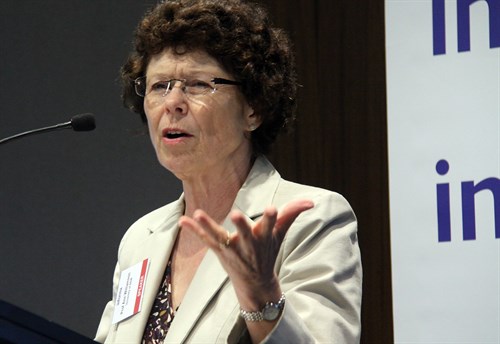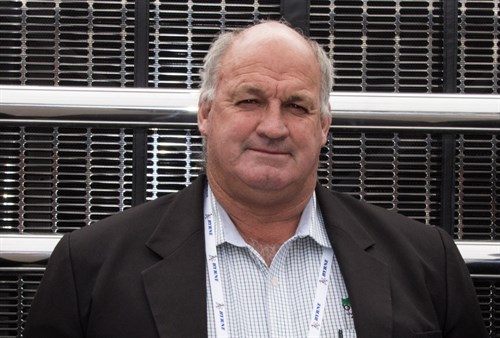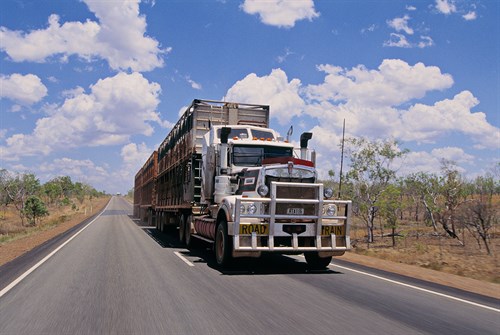Trucking association views proposal for drivers in remote areas to work fewer hours as unrealistic
A proposal for truck drivers to be limited to 10-hour workdays is unrealistic, according to the Australian Livestock and Rural Transporters Association (ALRTA).
The lobby group has dismissed a call from professor Ann Williamson for drivers to be moved to shorter shifts in line with other industries or for two drivers to be used to reduce the workload.
Williamson says doing so will improve the quality of life of drivers and give them more time to spend with their families, but ALRTA president Kevin Keenan does not believe such a proposal accounts for the realities of livestock transport and the remote areas it operates in.
“I am totally perplexed by the professor’s suggestion that eight to 10 hour days or using two drivers will improve safety or quality of life in remote environments,” Keenan says.
”Shorter working days will just increase the likelihood that long rest breaks will need to be taken at remote locations without basic amenities.
“For most long distance drivers, shorter days will just mean longer periods away from their families.”
Keenan claims it is not simple for companies to organise two-up driving for a number of reasons.

“For starters, most sleeper cabs are not rated for carrying an off-duty driver while the vehicle is in motion and owner-drivers just don’t have the option,” he says.
“In addition, labour costs would double for the trip, another unmanned vehicle might have to be parked up, and then there is the tricky task of matching driver personalities in a confined space for long periods.”
While Williamson advocates shorter workdays in most cases, she says she understands that in some instances drivers will need to work a long shift. However, she adds the drivers should be given more time to rest after completing a lengthy workday.
“It is time we review what we are allowing these drivers to do,” Williamson says.
“I can’t see any reason why truck drivers can’t be working similar hours to what you or I work…Certainly eight to 10 hours of work is probably adequate.”
Williamson says she is a strong supporter of advanced fatigue management (AFM), which gives operators the flexibility to develop their own fatigue management regime but requires measures in place to offset fatigue risks. For example, a driver who works a long shift one day must be given a longer rest break the following day to ensure they receive adequate rest.
“I don’t know why we can’t run an industry with much better thought. It would be much more productive and much more efficient, too, because tired drivers aren’t efficient,” she says.

ALRTA DEFENDS LIVESTOCK FATIGUE SCHEME
Williamson has also stirred up unrest within the trucking industry over her criticism of the livestock and rural transport fatigue management scheme (LRTFMS).
Williamson’s main criticism is that the scheme allows drivers to work too long — up to 14 hours a day for 11 days straight. She provided advice to the architect of the scheme, the National Heavy Vehicle Regulator (NHVR), during the development phase.
The NHVR says it stands by its approach. It subsequently received the backing of the Australian Trucking Association (ATA).
Now the ALRTA has taken a swipe, albeit in more strident tones.
ALRTA president Kevin Keenan says the NHVR has actually taken a low-risk approach with the LRTFMS because it only permits specific driving task with specific offsets in place to manage the risks of fatigue.
While Keenan says Williamson is entitled to air her views about fatigue management regulations, he does not believe that should extend to discussing advice she has provided to the NHVR.
”As a member of the NHVR’s fatigue expert reference group (FERG) the professor receives privileged operational information and is paid by the NHVR to provide her opinion on specified fatigue matters on a confidential basis,” Keenan says.
”It is highly inappropriate for any FERG member to disclose the nature of the advice that was provided to the NHVR or to publicly express dissatisfaction about the decisions made by the NHVR after considering that advice. To do so undermines public confidence in the regulator.”

Keenan adds that “public questioning of the NHVR’s decisions by those it employs to provide expert advice should not be tolerated”.
The ALRTA has publicly supported the LRTFMS since its introduction in 2015. It says the scheme provides the flexibility livestock transporters need when completing often unpredictable work in remote areas and is structured to allow drivers to take better quality rest at more convenient times and locations.
The LRTFMS exists under AFM and was released as a template to make it easier for operators applying to gain accreditation.
“The livestock AFM template was developed by the NHVR in close consultation with both industry and fatigue experts. All views were taken into account when exploring suitable risk-offsets that are able to improve productivity and animal welfare without compromising safety,” Keenan says.
“Professor Williamson was one of the original advocates of the AFM template system. Back then, it was proposed that each template would be entirely flexible, allowing approved drivers and operators to trade-off risks within a specified envelope as they saw fit.”
The LRTFMS does not allow drivers to exceed daily basic fatigue management (BFM) hours, but they can work more 14-hour days consecutively.
Under BFM, drivers are limited to six consecutive 14-hour workdays before needing to take a day’s rest.

